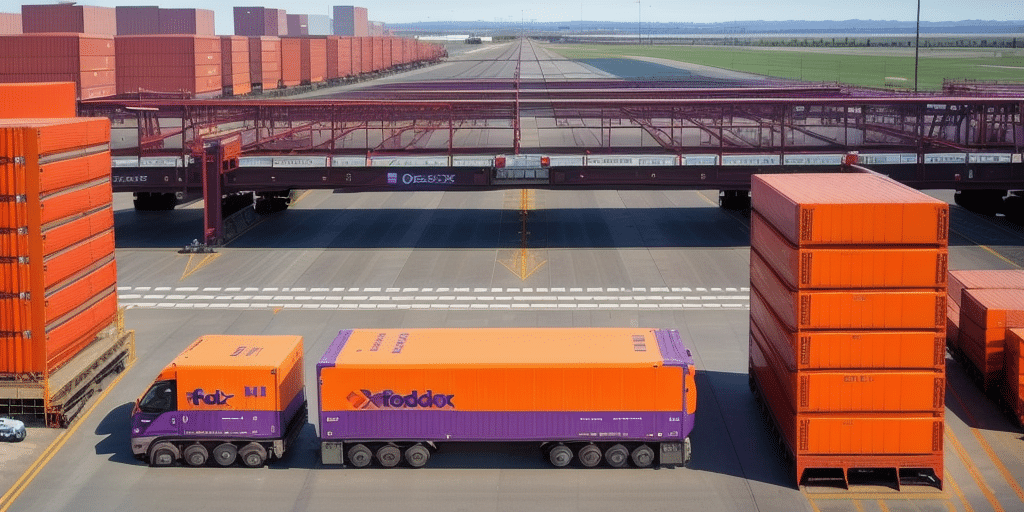Configuring a Scale for FedEx Ship Manager: A Comprehensive Guide
Efficient shipping operations rely heavily on accurate weight measurements. For businesses using FedEx Ship Manager, integrating a reliable scale is essential to ensure that packages are weighed correctly, shipping fees are accurately calculated, and the overall shipping process runs smoothly. This guide provides an in-depth analysis of configuring a scale for FedEx Ship Manager, including selecting the right scale, setup procedures, troubleshooting common issues, and maintenance tips to enhance accuracy and longevity.
Importance of Accurate Weight Measurement in Shipping
Why Precision Matters
Accurate weight measurement is crucial for several reasons:
- Cost Efficiency: Ensuring packages are weighed correctly prevents overpaying for shipping and minimizes unexpected fees.
- Operational Efficiency: Automated weight measurements streamline the shipping process, reducing manual entry errors.
- Compliance: Accurate weights help in adhering to FedEx’s shipping regulations and avoid delays caused by incorrect documentation.
Impact on Business Operations
Businesses that prioritize accurate weight measurements experience smoother logistics operations, better customer satisfaction due to timely deliveries, and optimized shipping costs. According to a recent industry report, companies that invest in reliable shipping equipment see a significant reduction in shipping errors and associated costs.
Requirements for Scales Compatible with FedEx Ship Manager
Technical Specifications
To ensure compatibility with FedEx Ship Manager, your scale must meet the following requirements:
- Connectivity: USB interface is standard, with some models offering Bluetooth connectivity for wireless setups.
- Weight Capacity: The scale should handle the maximum weight limits specified by your chosen FedEx service.
- Accuracy: Consistent and precise measurements are essential to avoid discrepancies in shipping costs.
Calibration and Maintenance
Regular calibration is vital for maintaining measurement accuracy. It is recommended to calibrate your scale weekly or as specified by the manufacturer. Proper maintenance, including cleaning and safe storage, also extends the scale’s lifespan and ensures reliable performance.
Selecting the Right Scale for Your Shipping Needs
Types of Scales
There are various types of scales available, each suited to different shipping requirements:
- Digital Bench Scales: Ideal for small to medium-sized businesses, offering digital displays for easy reading.
- Platform Scales: Suitable for larger packages, providing a spacious surface for items of different sizes.
- Portable Scales: Best for businesses that require mobility and flexibility in their shipping operations.
Key Features to Consider
When choosing a scale, consider the following features:
- Ease of Use: Intuitive interfaces and clear displays facilitate quick and accurate measurements.
- Durability: Robust construction ensures the scale withstands daily usage and varying package weights.
- Additional Functions: Features like built-in printers or data connectivity options can enhance workflow efficiency.
Connecting and Configuring Your Scale with FedEx Ship Manager
Step-by-Step Connection Guide
- Unbox and Assemble: Follow the manufacturer’s instructions to set up your scale.
- Connect to Computer: Use a USB cable or Bluetooth connection as supported by your scale model.
- Install Necessary Drivers: Check the manufacturer’s website for any required software or drivers.
- Launch FedEx Ship Manager: Open the software and navigate to the settings or configuration section.
- Add the Scale: Select the option to add or configure a scale and follow the on-screen instructions.
- Test the Setup: Weigh a known object to verify that the weight is correctly displayed in FedEx Ship Manager.
Optimizing Configuration Settings
Ensure that your scale’s settings match the requirements of FedEx Ship Manager. This includes setting the correct units of measurement (e.g., pounds or kilograms) and verifying that the scale is properly calibrated within the software to reflect accurate weights.
Troubleshooting Common Configuration Issues
Connection Problems
If your scale is not connecting properly, try the following steps:
- Check Cables: Ensure that all cables are securely connected and free from damage.
- Restart Devices: Restart your computer and scale to reset the connection.
- Update Drivers: Ensure that you have the latest drivers installed from the manufacturer’s website.
Inaccurate Weight Readings
Inaccurate measurements can stem from several issues:
- Uneven Surface: Place the scale on a flat, stable surface to prevent erroneous readings.
- Calibration Errors: Recalibrate the scale following the manufacturer’s instructions.
- Overloading: Avoid exceeding the scale’s maximum weight capacity.
Software Integration Issues
Ensure that FedEx Ship Manager is updated to the latest version to maintain compatibility with your scale. If issues persist, consult FedEx’s customer support for assistance.
Maintaining Your Scale for Longevity and Accuracy
Regular Cleaning and Care
Keep your scale clean and free from debris. Use a soft, dry cloth to wipe the surface regularly and avoid using harsh chemicals that could damage the scale’s components.
Scheduled Calibration
Calibrate your scale at regular intervals, such as weekly or monthly, depending on usage frequency. Consistent calibration ensures ongoing accuracy and reliability in weight measurements.
Proper Storage
When not in use, store your scale in a dry, cool place to prevent moisture damage and exposure to extreme temperatures, which can affect the scale’s accuracy and functionality.
Maximizing Efficiency and Cost Savings with an Integrated Scale
Streamlining the Shipping Process
Integrating a scale with FedEx Ship Manager automates weight measurements, reducing the need for manual entry and minimizing errors. This leads to faster processing times and enhanced operational efficiency.
Cost Optimization
Accurate weight measurements help in selecting the most cost-effective shipping options, preventing overcharges and optimizing shipping budgets. Additionally, minimizing shipping errors reduces the likelihood of returns and additional handling costs.
Data-Driven Insights
Utilizing a scale integrated with shipping software allows businesses to collect and analyze shipping data. Insights gained from this data can inform strategic decisions, such as optimizing package sizes and selecting appropriate shipping services.
Conclusion
Configuring a scale for FedEx Ship Manager is a pivotal step in optimizing your shipping operations. By selecting the right scale, ensuring proper setup and calibration, and maintaining your equipment diligently, you can achieve accurate weight measurements that enhance efficiency and reduce costs. Investing in reliable shipping tools not only improves operational workflow but also contributes to customer satisfaction through timely and accurate deliveries.
For more detailed information and support, refer to FedEx’s official shipping management resources.






















